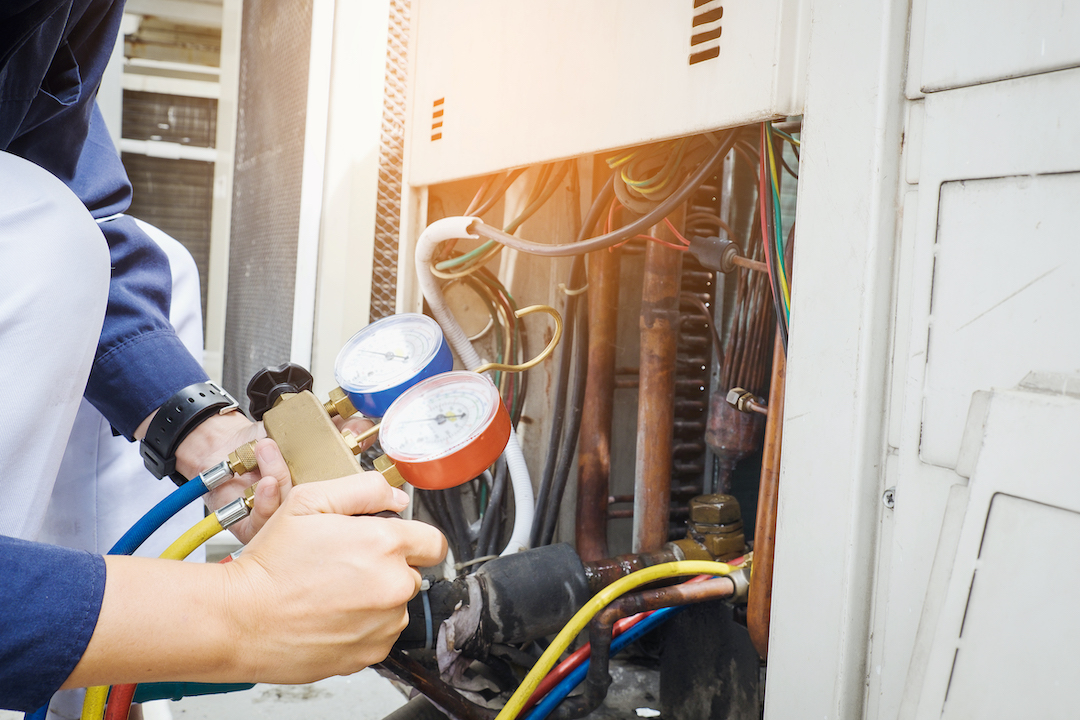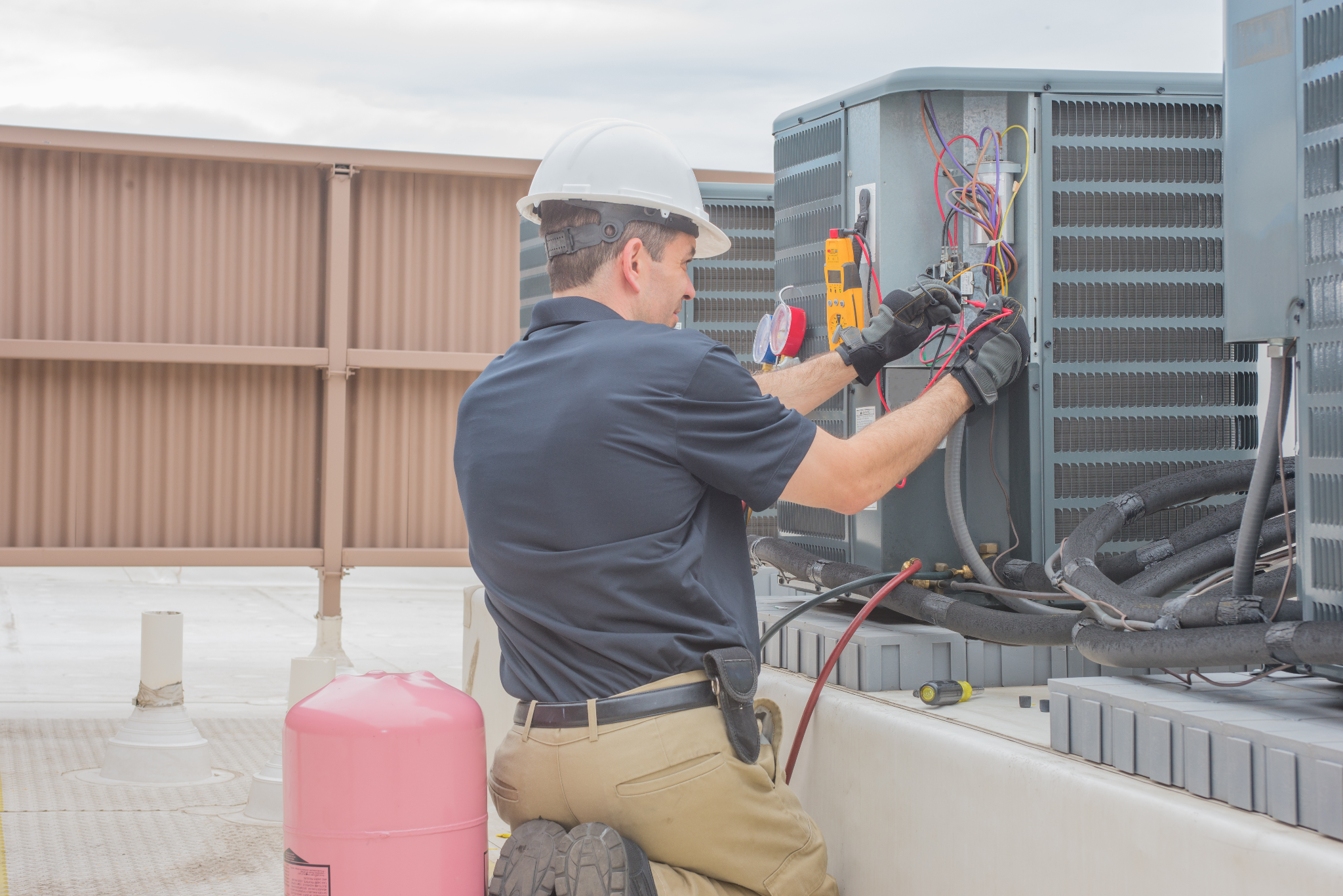Exactly How a Heat Pump and Heater Work With Each Other to Maximize Your Home's Home heating Performance
Recognizing just how a heat pump and heating system interact is necessary for homeowners seeking efficient home heating options. Each system has its staminas, supplying a well balanced strategy to home convenience. The heatpump masters modest temperature levels, while the heater provides quick warmth throughout severe cold. This synergy not only decreases power expenses but also enhances the lifespan of both devices. What factors affect this partnership, and just how can home owners optimize their advantages?
Understanding Heat Pumps: How They Work
Several people might be unknown with their inner functions, warmth pumps play a vital duty in contemporary heating systems. These tools run by transferring warmth from one location to one more, making use of the principles of thermodynamics. In colder months, a heatpump extracts warmth from the outside air, ground, or water, and transfers it inside your home to heat the home. Conversely, throughout warmer months, it can reverse the procedure, acting as an a/c unit by eliminating warm from inside to the outside.Heat pumps consist of an evaporator, compressor, condenser, and development shutoff. The refrigerant within the system soaks up heat as it evaporates at low temperatures and pressures. The compressor after that enhances the stress and temperature level of the refrigerant, permitting it to release warmth as it condenses. This reliable process can substantially decrease power intake compared to conventional heating approaches, making heatpump a lasting choice for environment control in homes.
The Role of Furnaces in Home Home Heating
Heaters play a vital role in home heating by providing a trustworthy resource of heat during the cooler months. They operate by generating warm with combustion or electrical resistance, dispersing it throughout the home using ducts or glowing systems. The effectiveness of a furnace is often gauged by its Annual Fuel Use Efficiency (AFUE) rating, which shows how effectively the system converts gas into heat.Furnaces can make use of different energy resources, including gas, gas, power, or oil, enabling homeowners to choose the most ideal choice for their needs. Unlike heatpump, which may have a hard time in extreme cold, heating systems preserve regular performance, guaranteeing that interior temperatures remain comfy despite exterior conditions. In addition, modern-day furnaces usually come geared up with advanced innovation, such as variable-speed blowers and wise thermostats, boosting their effectiveness and responsiveness. This versatility makes heating systems an important component in all-encompassing home heating strategies.

Advantages of Making Use Of Both Solutions With Each Other
Integrating the toughness of both heaters and warm pumps can result in a more reliable and effective home heating solution. Making use of both systems permits house owners to make use of the heat pump's power effectiveness during milder temperature levels while relying upon the furnace for even more extreme cold problems. This dual strategy can considerably decrease power costs, as heat pumps eat less electricity than typical home heating methods when temperature levels are moderate.Additionally, using both systems with each other can boost convenience levels in the home. Warmth pumps can offer constant, also heating, while heaters can swiftly increase ambient temperature levels when needed. In addition, the integration of both systems can expand the life expectancy of tools by minimizing damage on each system, as they share the workload. Ultimately, homeowners can appreciate a balanced, cost-efficient heating remedy that changes effortlessly to differing climate condition, making sure a cozy and welcoming home throughout the winter months.
Exactly How Warmth Pumps and Furnaces Complement Each Other
They produce a complementary home heating system that maximizes efficiency and comfort when homeowners integrate warm pumps and heating systems. Heatpump operate by moving warmth from the outside air or ground, making them highly reliable in modest environments. They stand out throughout milder temperatures, providing affordable heating. Alternatively, furnaces generate heat through burning or electric resistance, delivering strong, prompt heat throughout severe chilly conditions.The combination of these two systems enables for vibrant modifications based upon temperature level variations. During warmer months or milder wintertime days, the heatpump can take the lead, saving energy and decreasing prices. As temperatures drop, the heating system can perfectly engage, ensuring regular warmth throughout the home. This harmony not only optimizes power usage yet likewise enhances the life-span of both systems, as each device runs within its suitable performance array. Together, they develop a well balanced atmosphere that adapts to differing environment demands.
Maximizing Performance: Tips for Homeowners
Home owners can improve their heating performance with a number of practical approaches. Establishing a normal upkeep routine, incorporating smart thermostat technology, and implementing reliable insulation and sealing remedies are essential actions. These procedures not only enhance convenience yet additionally decrease power prices.
Routine Maintenance Set Up
To guarantee optimal home heating effectiveness, developing a regular maintenance schedule is essential for any type of home. Homeowners ought to focus on regular assessments of both heatpump and heaters to ascertain peak performance. This consists of altering air filters every one to three months, as stopped up filters can greatly decrease performance. Furthermore, organizing specialist maintenance at least yearly permits specialists to determine and address prospective problems before they rise. Homeowners must additionally cleanse the heatpump's exterior unit to stop particles accumulation that can hinder air flow. By adhering to a regular maintenance routine, homeowners not only improve their heating systems' efficiency however additionally expand their life-span, bring about better convenience and lowered power prices throughout the cooler months.
Smart Thermostat Combination
Incorporating a wise thermostat right into a home heater can greatly boost energy performance, specifically as it enables accurate control over temperature settings. These tools can discover the home owner's timetable and preferences, automatically readjusting the temperature level to maximize comfort while reducing power usage. As an example, they can lower home heating during times when the home is empty, lowering unneeded consumption. Numerous wise thermostats additionally offer real-time power use data, making it possible for house owners to make educated decisions concerning their heating behaviors. Furthermore, remote access via mobile phone applications enables individuals to readjust settings from anywhere, making certain the home is warm upon return. Generally, smart thermostat assimilation not just enhances comfort but substantially contributes to energy financial savings and efficiency.
Insulation and Securing Solutions
Smart thermostats play a vital role in energy effectiveness, but their efficiency can be substantially enhanced by proper insulation and securing services. House owners need to prioritize protecting attic rooms, floors, and wall surfaces to reduce warm loss. High-grade insulation materials, such as spray foam or fiberglass, can considerably boost thermal resistance. In addition, sealing spaces around air ducts, doors, and home windows protects against cool air seepage and warmth escape. Weatherstripping and caulking are reliable approaches for dealing with these leaks - heat pump installation ooltewah tn. Normal examinations for air leakages, along with the use of blower door examinations, can aid determine issue locations. By spending in insulation and sealing, property owners can maximize the performance of their home heating systems, inevitably bring about decreased power usage and lower utility visit costs
Usual Myths About Heat Pumps and Furnaces
What misconceptions surround heat great site pumps and furnaces? Several people mistakenly believe that heatpump are inadequate in chillier climates. In truth, contemporary heat pumps are made to run effectively even in reduced temperatures, providing trustworthy home heating throughout wintertime. One more usual myth is that heating systems are constantly much more effective than heatpump. This depends on the specific power sources and effectiveness rankings of the units in inquiry. Some may additionally assume that utilizing both systems at the same time is unneeded, but in fact, this combination can enhance heating efficiency, specifically during severe weather. In addition, individuals often presume that warmth pumps require continuous upkeep, when in reality, they have similar upkeep needs to traditional heating unit. By exposing these misconceptions, homeowners can make more educated choices concerning their heating options, eventually leading to improved comfort and power performance in their homes.
Maintenance Factors To Consider for Combined Equipments

Frequently Asked Concerns
Can Warm Pumps Job Efficiently in Exceptionally Cold Climates?
Heatpump can have a hard time in exceptionally cool climates because of lowered efficiency and heat extraction constraints. Nonetheless, advancements in innovation have brought about models developed for much better efficiency in such conditions, enhancing their stability in harsh settings.
Exactly How Lengthy Do Warm Pumps and Furnaces Commonly Last?
Heatpump commonly last 15 to two decades, while heaters have a life-span of 15 to three decades. Routine upkeep can prolong their durability, making sure effective operation and minimizing the requirement for premature replacements.

What Is the Ordinary Cost of Putting Up Both Solutions?
The ordinary cost of mounting both a heat pump and a furnace commonly ranges in between $5,000 to $10,000 - furnace replacement. Variables affecting this cost include system dimension, installation complexity, and local labor prices
Exist Tax Rewards for Utilizing Energy-Efficient Heating Solutions?
Many property owners ask about tax obligation motivations for energy-efficient heater. Different government and state programs frequently provide credit scores or helpful site refunds, encouraging the fostering of lasting modern technologies to reduce energy intake and advertise ecological duty.
Just how Do I Choose the Right Size Heatpump and Heating System?
Picking the appropriate dimension heatpump and heating system includes determining the home's square video, taking into consideration insulation quality, and examining regional environment. Consulting an expert can ensure perfect system efficiency and power effectiveness based upon certain requirements. heat pump service. Comprehending how a heat pump and heater job together is essential for home owners looking for efficient heating options. In chillier months, a warmth pump essences heat from the outdoors air, ground, or water, and transfers it inside your home to heat the living space. When homeowners incorporate warmth pumps and heaters, they produce a complementary home heating system that maximizes performance and convenience. Warm pumps operate by moving warm from the outdoors air or ground, making them very effective in moderate environments. Warm pumps can battle in extremely cool climates due to reduced performance and warm removal constraints